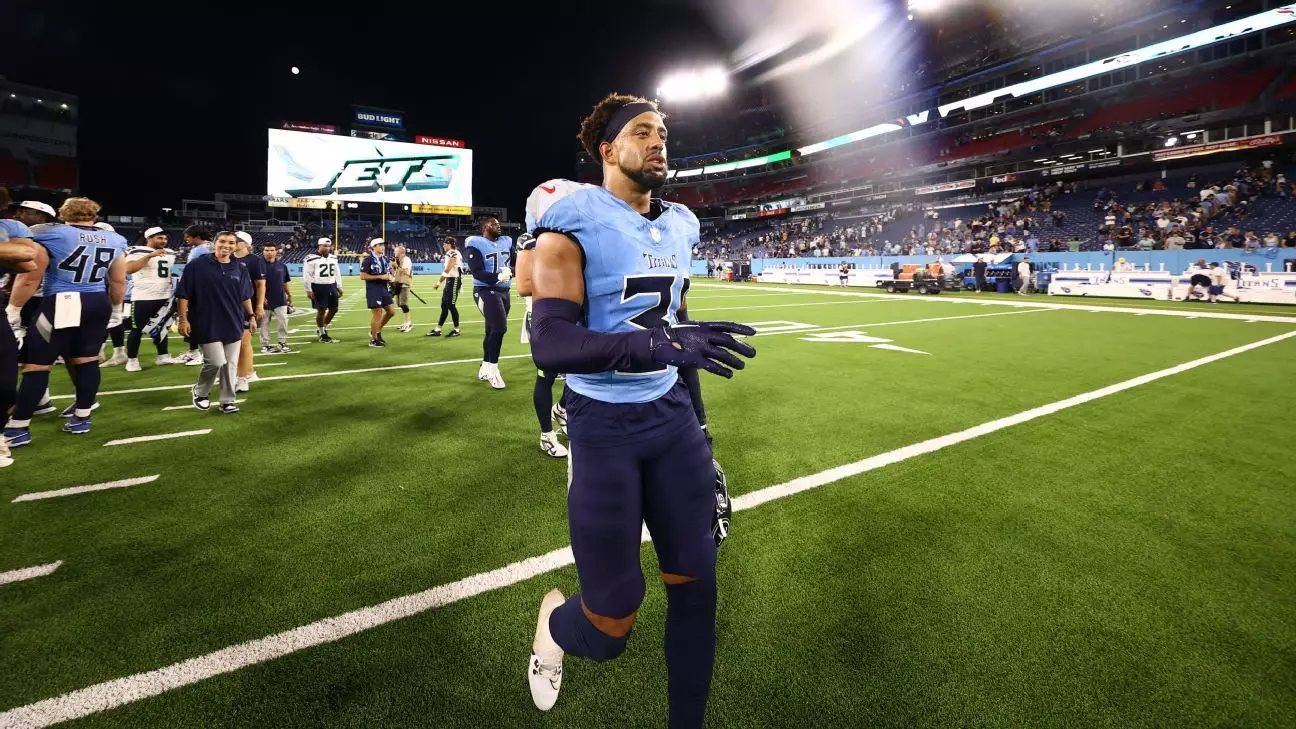Nashville, Tennessee, has witnessed the brief tenure of Jamal Adams with the Titans culminate in his recent release, a decision steeped in mutual understanding and respect. Having joined the Titans on a one-year contract after parting ways with the Seattle Seahawks, Adams was initially perceived as a promising asset for the team’s defensive lineup. His reunion with Dennard Wilson, who formerly coached him at the New York Jets, added another layer of optimism for what the Titans envisioned in leveraging Adams’ experience and talent. However, the realities of team dynamics and individual circumstances quickly reshaped this narrative.
Despite the potential that Adams brought, his impact on the field was surprisingly minimal. Over the course of three games, he accumulated just 20 snaps. His debut against the Jets saw him contributing two snaps, followed by a minor uptick of 17 snaps in the subsequent game against the Green Bay Packers. Yet, the defining moment of his short stint came in Week 4 when Adams played merely one snap against the Miami Dolphins – a scenario that fueled his increasing frustration. It is important to note that while Adams openly stated that his desire was not to be a starter but to contribute, the situation begs the question: what are the contributing factors when a high-profile player finds themselves sidelined?
From the Titans’ perspective, Adams’ struggles stemmed largely from his ongoing battle with a hip injury, which kept him from fully integrating into the team during training camp. Missing substantial practice time undoubtedly hampered his ability to connect with teammates and adapt to the Titans’ defensive schemes. The team had no choice but to place him on the non-football injury list, which temporarily sidelined him from the rigors of competitive play. This lack of preparation and practice time not only affected Adams but also posed challenges for the coaching staff in evaluating his fit within the team.
Looking Ahead: A Fresh Start for Adams
Despite the challenges he faced in Tennessee, there remains a sense of optimism surrounding Adams’ future. The veteran defensive back has indicated that he is healthy and prepared to embrace a new opportunity with another team. As he steps into this next stage of his career, he will likely carry with him insights gained from his brief stint with the Titans, along with an unyielded determination to prove his skills on the field. The next franchise that welcomes Adams will undoubtedly analyze his past performance, seeking to harness his potential while mitigating the factors that impeded his success in Nashville.
While Jamal Adams’s time with the Titans may have been fleeting, it serves as a poignant reminder of the delicate interplay between injury, opportunity, and team dynamics in professional sports. As Adams moves forward, one can only hope he finds the environment where he can once again thrive and make a significant impact.


Leave a Reply